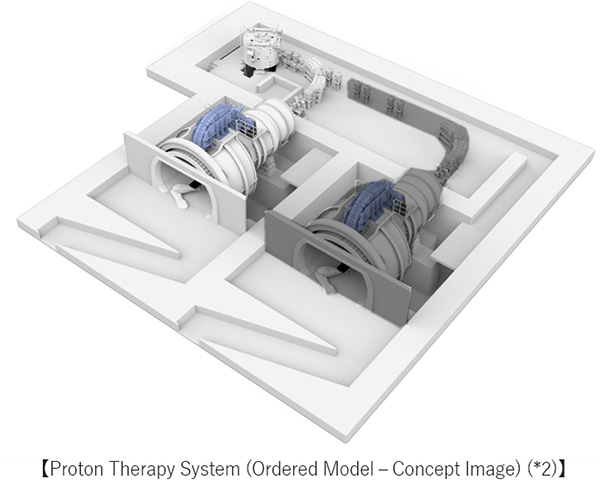Order Received for Proton Therapy System for Bangkok Hospital— First Order by a Southeast Asian Medical Institution, a Step Toward Wider Adoption of Cutting-Edge Cancer Therapy —
October 30, 2025
Sumitomo Heavy Industries, Ltd. (Head Office: Shinagawa-ku, Tokyo; Representative Director, President, and CEO: Shinji Shimomura; hereinafter “SHI”) has received an order for a next-generation proton therapy system (hereinafter “the system”*1) for Wattanosoth Cancer hospital, specialized hospital within Bangkok Hospital Headquarter operated by Bangkok Dusit Medical Services PCL.
The system is scheduled to be installed at the Bangkok Proton Center to be newly established in Bangkok, Thailand, with proton therapy starting from 2029.
This marks the first time that SHI has received an order for a proton therapy system in the Southeast Asia region. Going forward, SHI will make further contributions to cancer therapy outside of Japan, including in the Southeast Asia region which encompasses Thailand, with the aim of realizing societies where people can live long, healthy lives.

[Wattanosoth Cancer Hospital]
Established in 2005, the hospital is a specialized cancer center within Bangkok Hospital Headquarter. The hospital is dedicated to delivering comprehensive cancer care through a multidisciplinary team of specialists, supported by advanced diagnostic tools and cutting-edge medical technologies.
[Bangkok Dusit Medical Services PCL]
This is the largest private hospital operating company in the Kingdom of Thailand. The company operates about 60 hospitals in Thailand, service a wide range of medical specialties, and provides international-standard medical services.
[Next-generation proton therapy system]
The next-generation proton therapy system to be adopted is the multi-room type, composed of a therapy room equipped with a rotating gantry(*3) enabling 360-degree irradiation, and another room for future expansion. The compact system layout reduces required building volume by about 30% compared to the previous system, and simple, highly-accurate patient positioning is achieved using a large-field cone-beam CT(*4) mounted on the 360-degree gantry. The system is also capable of short-term irradiation using high-speed scanning technology for accurately treating moving organs, such as the lungs and liver. The accelerator is equipped with a superconducting cyclotron boasting the world’s highest output for proton therapy.
[Proton therapy]
Proton therapy is one type of radiation therapy for cancer. It involves accelerating protons (also known as hydrogen ions), irradiating the tumor, and destroying the tumor cells. Due to the characteristics of proton beams, irradiation can be focused onto tumor cells, reducing side effects, and allowing patients to maintain their lives in society.
(*1) The next-generation proton therapy system is an unapproved medical device.
(*2) Additional Rotating Gantry Planned for Future Expansion.
(*3) This is a part of the proton therapy system—a large rotating mechanism that surrounds the patient. It enables proton beams to be delivered from any angles, allowing treatment to be administered from optimal direction for targeting tumors.
(*4) This is a gantry mounted Xray CT imaging device capable of scanning high-precision 3D images with a large field of volume.
